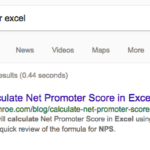B2B tech SEO is no easy subject. It’s more specific and therefore, a little trickier than your typical to B2B Search Engine Optimisation . So understanding the finer details of how your business and your buyer’s persona work together can make the difference between success and failure.
So let’s get specific. We’re here to talk about inbound marketing, with special focus on B2B inbound marketing in the tech space.
That means, attracting appropriate website visits for companies selling software, hardware and tech based services to other businesses.
So let’s jump right in.
Separate your products and services
This may sound obvious, but it’s important for B2B tech SEO that you know the difference between the products and services that you offer from your prospect’s perspective and which order you want to market them.
You’re not going to market all your products at once and to the same people, this will get you nowhere. So separate them, putting them into packages depending on how you want to sell them. Then put them in order of importance.
Depending on how the next stage goes, you may need to return to this stage to do some tweaking.
How do you organise your products and services?
You can organise your products and services using different priorities based on your own preferences and business goals. These priorities include:
- The most readily available
- The most sought after
- The largest margins
- The lowest risk
- The most unique
You can then decide how to organise your services in your menu bar of your homepage.
Know your customers
Once you have decided what your top products are and what they will be called, you’ll need to discover the kinds of people that will be interested in each one.
Who are your customers? You may have an idea, but you need to make sure you are right. Assumptions in this case can waste a lot of time and money. So look into the background of your existing customers.
If you have insufficient information, you can send out surveys asking questions about their business needs and goals. You could also place a survey at strategic points of your website to see who is reading resources about your products and services.

Read more about the buyer persona in this blog.
Create a buyer persona for all the different types of customers you have and decide which one is your ideal buyer. This would usually be the decision maker of the business.
Figure out what to call your products and services
Once you have everything separated and sorted. You can start looking at what you call each product and/or service. It’s important that you don’t get stuck on naming something what you think it is called. You could end up pushing the name of a product or service that no one understands or is aware of.
You need to check what your customers call your products and services, and of course Google is the best indicator of that.
How do you figure out what Google calls it?
If you have an idea of what to call your products and services, search them in Google and see what comes up in the top 5 results. Are they exactly what you are selling? If not, then these words are likely inaccurate descriptions of your products and services for the sake of B2B tech SEO.
Perform the same search on what your customers are calling it, and if the top 5 shows what you are selling, then you’re on the right track. What you’ve now got from a successful search on Google is the right short-tail keyword. This is usually 1 to 2 words used to describe your product or service.
Understand your customer journey
Once you have a buyer persona, you can put yourself in their shoes and walk a few miles in them until you understand the kind of experience they have before they decide to purchase your product or service.
We have whole post on how to build a buyer’s journey,
Find out what your customers are searching for on Google
By understanding you buyer’s journey well, you’ll know what your prospects are searching for each time they come in contact with a business like yours. Here’s where a marketing funnel will come in handy.
By building this out, you will have content that targets your prospect at different stages of the marketing funnel, TOFU, MOFU and BOFU.
Find long-tail options from your short-tail keywords with answerthepublic. By searching your short-tail keywords, this webtool will return questions, terms and alphabetical variations of your short-tail keywords. Depending on the popularity of the term, you may get up to 1000 different long-tail keywords. A lot of them could be useless, so you’ll need to get through them and figure out which ones are the most valuable to you.
Find out which keywords have good search volumes and less challenging difficulties using SEO audit tools like Moz or SEMrush. Using these tools will give you a better idea of which long-tail keywords are easier for you to rank for in Google.
Build a Content Plan
A content plan will contain all the top long tail keywords you’ve found from answerthepublic and Moz. You can write these blog posts in any particular order, but the plan needs to include regularity of publication. Publishing a blog once a week is best practice for keeping you relevant in Google’s eyes.
It’s important that you link your blogs to one another and link all sub-posts within a topic back to the main post (pillar post).





